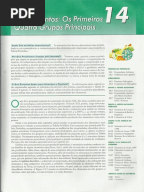Chimica Fisica Atkins De Paula Pdf
Chimica Fisica Atkins De Paula Pdf Average ratng: 4,7/5 8644 reviews
Trapp Professor of Chemistry, University of Louisville, Louisville, Kentucky, USA M. Cady Professor of Chemistry, Indiana University Southeast, New Albany Indiana, USA C. 
Giunta Professor of Chemistry, Le Mayne College, Syracuse, NY, USA I w. Freeman and Company New York Student's solutions manual to accompany Physical Chemistry, Eighth Edition © Oxford University Press, 2006 All rights reserved ISBN-13: 978-0-7167-6206-5 ISBN-lO: 0-7167-6206--4 Published in Great Britain by Oxford University Press This edition has been authorized by Oxford University Press for sale in the United States and Canada only and not for export therefrom. Library of Congress Cataloging in Publication Data Data available Second printing W. Freeman and Company 41 Madison Avenue New York, NY 10010 w.whfreeman.com Preface This manual provides detailed solutions to all the end-of-chapter (b) Exercises, and to the odd-numbered Discussion Questions and Problems. Solutions to Exercises and Problems carried over from previous editions have been reworked, modified, or corrected when needed. The solutions to the Problems in this edition rely more heavily on the mathematical and molecular modelling software that is now generally accessible to physical chemistry students, and this is particularly true for many of the new Problems that request the use of such software for their solutions. But almost all of the Exercises and many of the Problems can still be solved with a modem hand-held scientific calculator.
When a quantum chemical calculation or molecular modelling process has been called for, we have usually provided the solution with PC Spartan pro™ because of its common availability. In general, we have adhered rigorously to the rules for significant figures in displaying the final answers. However, when intermediate answers are shown, they are often given with one more figure than would be justified by the data. These excess digits are indicated with an overline. We have carefully cross-checked the solutions for errors and expect that most have been eliminated.
We would be grateful to any readers who bring any remaining errors to our attention. We warmly thank our publishers for their patience in guiding this complex, detailed project to completion. The properties of gases Answers to discussion questions 01.1 An equation of state is an equation that relates the variables that define the state of a system to each other. Boyle, Charles, and Avogadro established these relations for gases at low pressures (perfect gases) by appropriate experiments. Boyle determined how volume varies with pressure (V ex lip), Charles how volume varies with temperature (V ex T), and Avogadro how volume varies with amount of gas (V ex n). Combining all of these proportionalities into one we find nT Vex. Inserting the constant of proportionality, R, yields the perfect gas equation RnT V = --or pV = nRT.

P 01.3 Consider three temperature regions: (1) T I, signifying that they have a molar volume greater than a perfect gas, which implies that repulsive forces are dominant. At intermediate pressures, most gases show Z TB. Z > I at all pressures because the frequency of collisions between molecules increases with temperature. 01.5 The van der Waals equation 'corrects' the perfect gas equation for both attractive and repulsive interactions between the molecules in a real gas. See Justification 1.1 for a fuller explanation. The Bertholet equation accounts for the volume of the molecules in a manner similar to the van der Waals equation but the term representing molecular attractions is modified to account for the effect of temperature. Experimentally one finds that the van der Waals a decreases with increasing temperature.
Theory (see Chapter 18) also suggests that intermolecular attractions can decrease with temperature. E1.2(b) E1.3(b) 4 STUDENT'S SOLUTIONS MANUAL This variation of the attractive interaction with temperature can be accounted for in the equation of state by replacing the van der Waals a with a/To Solutions to exercises (a) The perfect gas law is pV = nRT implying that the pressure would be nRT All quantities on the right are given to us except n, which can be computed from the given mass of Ar. N = 25 g = 0.626 mol 39.95 g mol-1 (0.626 mol) x (8.31 x 10-2 dm3 bar K-1 mol-I) x (30 + 273 K) so P = 3 =. 1.5dm not 2.0 bar. (b) The van der Waals equation is P = V -b -V2 m m (8.31 X 10-2 dm3 bar K-1 mol-I) x (30 + 273) K sop = (1.53 dm3 /0.626 mol) -3.20 x 10-2 dm3 mol- 1 (1.337dm6atmmol-2) x (1.013baratm-1) _I -1 -3 -10.4 bar. (1.5 dm /0.626 mo1)2 (a) Boyle's law applies: P V = constant so pf Vf = Pi Vi and prVr (1.97 bar) x (2.14dm3) 1 1 Pi = --= = 1.07 bar Vi (2.14 + 1.80) dm3 (b) The original pressure in bar is ( 1 atm) (760 TOrr) I I Pi = (1.07 bar) x x = 803 Torr 1.013 bar I atm The relation between pressure and temperature at constant volume can be derived from the perfect gas law pV = nRT Pi so P ex: T and Ti Pr Tr E1.4(b) E1.S(b) E1.6(b). E1.7(b) THE PROPERTIES OF GASES 5 The final pressure, then, ought to be = pjTr = (125 kPa) x (I + 273) K = 1120 kPa I Pr Tj (23 + 273) K According to the perfect gas law, one can compute the amount of gas from pressure, temperature, and volume.